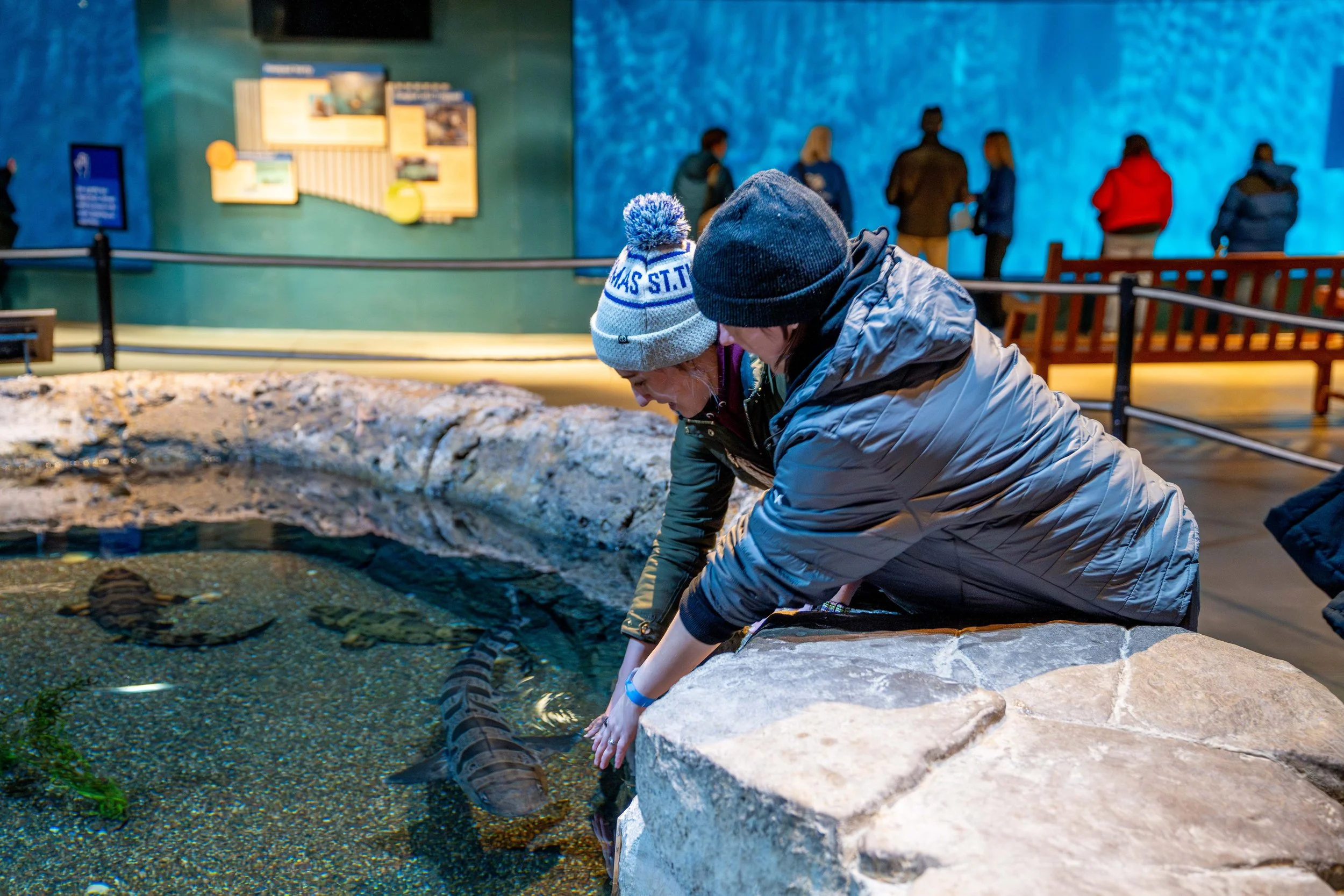Diving Deep in the Zoo’s Estuary
Discovery Bay gives Zoo guests the chance to dive deep into a world of underwater wonder. From sharks to sea lions, children and adults alike have marveled at the diversity found in our planet’s oceans. For many, the Zoo’s estuary, also known as the touch pool, is a key part of this exploration.
If you’ve ever dipped your hands into the waters of the Zoo’s estuary, you’ve probably noticed the range of species swimming just beneath your fingertips. The estuary features horn, leopard, and swell sharks, as well as the California bat ray. But what makes certain species good candidates for underwater cohabitation? And what makes these particular species good choices for a more hands-on learning experience?
There are many factors that go into choosing aquatic “roommates”. From region of origin to diet compatibility, many items are examined before animals are placed together. But when planning any multi-species habitat, the first thing considered is the risk for inter-species aggression. Animals that pose a physical risk to each other are out of the running, and those that remain should have specific areas within the habitat for themselves. For example, swell and horn sharks are benthic, meaning they naturally spend most of their time on the sea floor, or the bottom of the estuary habitat. Meanwhile, leopard sharks are pelagic, spending much of their time swimming around. This means that each species can comfortably cohabitate without clashing over space.
Unlike other habitats at the Zoo, the estuary gives guests the unique opportunity to get closer to the animals, encouraging people of all ages to gently touch each species to learn more. But what is it about these species that makes them good candidates for this type of experience?
First, sharks and rays are good touch pool fish due to their lack of scales and protective slime. When touched, other fish can lose this important protective coating and become vulnerable to disease. Sharks and rays, however, have tough skin which can safely handle guest contact. Of course, no animal wants to be touched all the time, and the Zoo carefully constructed the habitat with this in mind. Zoo Curator and Aquarist Christoph Noetzli explains, saying, “The estuary is intentionally designed to the give the animals space away from the guests, if desired. Not only is there an area in the center that is out of reach to guests, but there are varying depths in the habitat which allows the ground dwellers to stay out of reach.”
And what about teeth? “Almost all sharks have sharp teeth,” says Noetzli, “however very few would try to bite things that they don’t want to eat or don’t see as a threat. As long as everyone is gentle with their contact, there are no safety concerns. Of course, we make sure to not have guests’ hands in the water when we feed the animals in the morning!”

